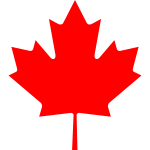Kinds Of Weed
Discuss kinds of weeds. Weed is a type of plant that is not welcome in any garden or lawn. They interfere with the development of normal plants, and they can cause crowding. Weeding or manual weed control is a frequent occurrence in small and medium farms. Some big farms also prefer this method because they try to avoid pesticide and herbicide use. Organic methods of weeding are also available, including the use of biological agents and browsers (cattle, goats, etc.).
The first thing one needs to know about weed control is what would work on a particular weed type. The types of weed control practice to choose sometimes depend on the kinds of weed in a garden or a plot. There are general categories of weeds: grasses, sedges and broadleaf weeds.
Grass-like Kinds of Weed
Grass weeds are those that resemble tuftgrass. Although these kinds of weed don’t seem to do much damage in a regular garden setting because of their size and appearance, they become a major problem in professionally kept lawns like baseball and soccer fields, as well as golf lawns.
A football field overrun with weeds can be slippery and bad for players. The same goes for golf courses that invest on good grass. Some kinds of weed can make a landscape unruly and unsightly. They intersperse with tuftgrass species and steal resources like soil nutrients that are meant for the expensive grasses. In home gardens, these kinds of weed can become a problem if they take up most of the space and become a hindrance to proper lawn care.
Sedge Weeds
These kinds of weed are annual plants that resemble the life cycle of perennial grasses. The stems are located above ground and flowering is profuse. Perennial kinds of weed of the sedge type develop thick rootstock that tend to persist below ground protected from the elements. Sedge kinds of weed are distinguished by their basal leaves and small spikelet-type flowers. Sedges are competitive and can overpopulate desirable lawn space, dislodging grasses and other plants of economic importance.
Broadleaf Kinds of Weed
Broadleaf weeds include the pretty and edible dandelion, but not all the weeds in this group are useful. In fact, many of these are detrimental to normal crops, especially turf grasses. They can also be troublesome because they grow fast and inhabit a patch quickly. If left uncontrolled, broadleaf weeds can grow larger in number and become uncontrollable because of the rapid spread of their seeds.
Another way to classify weeds is by categorizing them according to how often they appear in a year. This is an important aspect to look at if you intend to keep your garden or farm weed-free all year long. Some herbicides are also meant for the control of certain kinds of weed that are short-lived.
Annual weeds usually have resilient seeds that persist until the next growing cycle. They germinate from seed and then develop during the season, coinciding with the life cycle of common winter and summer crops. These weeds die within the year, yet some of their seeds persist for the next year. Crabgrass is a good example of an annual weed.
Perennial weeds have underground structures that live on even if the aboveground parts of the weed is cut. The challenge for weeders is to remove the whole plant, especially the rhizomes, tubers and stolons that are able to produce aboveground parts with enough soil moisture.
Lastly, there is weed that people smoke for recreational and health purposes. This plant matter is called marijuana and makes people euphoric. In slang, it is called weed. There are many different strains of weed and are called different things like ‘AK47’ and ‘Blueberry Haze’ depending on color, shape, size, where and how it was cultivated and its physical effects.






